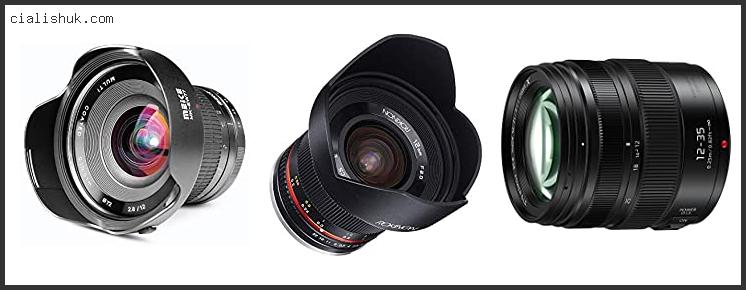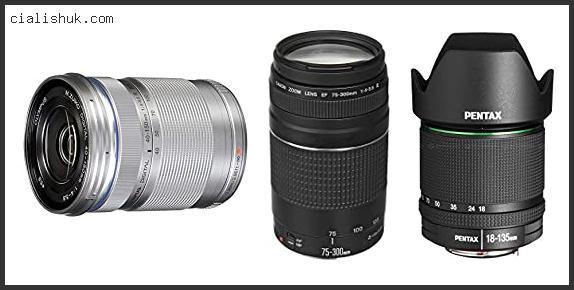Choosing the right lens can dramatically change your photography experience. This guide will help you find the best lenses for Olympus OM-D E-M10, covering various needs and budgets. We’ll explore different lens types, factors to consider, and offer recommendations based on my personal experience.
The Olympus OM-D E-M10 utilizes the Micro Four Thirds (MFT) system, a smaller sensor format than full-frame cameras. This smaller sensor offers several advantages, including lighter and more compact lenses. While a smaller sensor might seem like a drawback, MFT lenses are generally more affordable and produce excellent image quality, especially in good light. The smaller size also makes the camera system extremely portable – perfect for travel or everyday carry. I remember taking my OM-D E-M10 on a backpacking trip through Southeast Asia, and the compact size and lightweight lenses were a game-changer compared to carrying a larger DSLR setup. The portability of the system also made it much less obtrusive when shooting street photography.
Factors to Consider When Choosing Lenses
Selecting the right lens depends on your photographic style and preferences. Consider the focal length (measured in millimeters and determining the field of view), aperture (controlling the amount of light entering the lens and influencing depth of field), image stabilization (crucial for sharper images, especially in low light), and lens construction (affecting image sharpness, distortion, and overall image quality). For example, a wide-angle lens will capture a wider scene, ideal for landscapes, while a telephoto lens is best for capturing distant subjects, like wildlife or sports. Understanding these factors will help you make an informed decision about which lenses are best suited for you. Don’t just focus on megapixels; lens quality significantly impacts the overall image quality more than a slight increase in sensor resolution would.
Olympus OM-D E-M10’s Strengths and Weaknesses
The Olympus OM-D E-M10, while a fantastic entry-level mirrorless camera, does have its limitations. While it boasts excellent image quality, its autofocus system isn’t as advanced as some higher-end models. Consequently, fast-moving subjects might pose a slight challenge. The sensor’s performance in low-light situations, while decent, is also not as outstanding as those found in larger sensor cameras. However, the camera’s versatility and affordability make it ideal for photographers wanting to explore different photographic styles without a huge initial investment.
Best Lenses for Everyday Shooting
2-Pack 37mm Front Lens Cap Cover with Deluxe Cap Keeper for Olympus 14-42mm 1:3.5-5.6 EZ Kit Lens on Olympus OM-D EM10 Mark III II EPL9 EPL8 EPL7 EPL6 EPL3 EPL2 EP3 & Other 37mm Filter Thread Lenses
- Inlcudes 2 x High quality plastic center pinch front lens cap + 2 x Deluxe elastic lens cap keeper
- The front lens cap protects your lens from scratches, fingerprints and the elements when the lens is not in use
- The deluxe lens cap keeper prevents loss of your lens cap and make your photography more convenient
- Easy to use: Simply pinch the center of the cap to quickly attach to the front of your camera lens, as to the lens cap keeper, attached with the 3M adhesive pad or loop through the cap attachment hole
- Compatible with any camera lenses with 37mm lens thread size, Please note your camera’s lens thread size will be marked somewhere on the lens barrel
EP-10 Eyepiece Eyecup Viewfinder Eye Cup Replacement for Olympus OM-D E-M10/E-M5 Mark I Silver/Black Mirrorless Digital Cameras (2-Pack), ULBTER Viewfinder Eye Cup Cover EM5 EM10
- ✪ Compability: Compatible with Olympus OMD E-M10 E-M5 MK I Cameras digital cameras , NOT fit EM-5 Mkii ,E-M10 Markii.
- ✪ Material:Made from ABS,it is hard,NO soft silicone.
- ✪Effectively shields light that may enter the viewfinder and cause flare.
- ✪ Protection:Protects dust and moisture from entering your viewfinder, protects viewfinder from impact and scratches;
- ✪ Protect as a Cushion: Work as a cushion around camera’s eyepiece,which provide a protection for camera eyepiece
EP-15 Eyepiece Eyecup Viewfinder Eye Cup for Olympus OM-D E-M10 Mark II III/E-M5 Mark II Silver/Black Digital Cameras (2-Pack), ULBTER Viewfinder Eye Cup Cover EM5 EM10 MarkII MarkIII
- ✪ Compability: Compatible with Olympus OMD EM-5 Mkii ,E-M10 Mark ii /E-M10 Mark iii digital cameras , NOT fit E-M10 E-M5 Mark I .
- ✪ Material:Made from ABS,it is hard,NO rubber.
- ✪Effectively shields light that may enter the viewfinder and cause flare.
- ✪ Protection:Protects unwanted light, dust and moisture from entering your viewfinder, protects viewfinder from impact and scratches;
- ✪ Protect as a Cushion: Work as a cushion around camera’s eyepiece,which provide a protection for camera eyepiece
Olympus M.Zuiko Digital ED 14-42mm f/3.5-5.6 EZ Pancake Lens
This kit lens is a great starting point. Its compact size makes it incredibly convenient for everyday use, and it covers a versatile focal range, suitable for landscapes, portraits, and general snapshots. While its aperture isn’t the fastest, its portability and versatility make it a valuable addition to any OM-D E-M10 kit. I’ve personally used this lens extensively for travel photography, and its lightweight nature proved invaluable when navigating crowded streets or hiking trails. The image stabilization helps to compensate for camera shake, producing sharper images, even when shooting handheld.
Olympus M.Zuiko Digital ED 45mm f/1.8 Lens
A prime lens offering a classic 90mm equivalent focal length (in full-frame terms), perfect for portraiture. Its fast f/1.8 aperture allows for beautiful background blur (bokeh), creating a professional look. This lens excels in low-light conditions and offers exceptional sharpness. This was my go-to lens for portraits and street photography. The smaller size compared to a similar full-frame 90mm portrait lens allowed for discreet shooting and quick focusing on subjects.
Lenses for Landscape Photography
Olympus M.Zuiko Digital ED 9-18mm f/4-5.6 Lens
A wide-angle zoom lens, this lens is ideal for capturing expansive landscapes. Its versatile zoom range allows for a flexible approach to composition, letting you capture everything from sweeping vistas to architectural details. The wide-angle capabilities are perfect for capturing vast landscapes with depth and perspective, a feature I found invaluable during trips to National Parks. Its image quality is consistent across the zoom range, producing sharp and detailed images. While the maximum aperture isn’t the fastest, the overall image quality is more than adequate.
Panasonic Lumix G Vario 7-14mm f/4 ASPH Lens
A popular choice for landscape photography, this lens offers an ultra-wide-angle perspective equivalent to 14-28mm in full-frame terms. Its superb image quality and compact design make it ideal for those who prioritize both portability and performance. I remember capturing incredible starry night shots using this lens, its wide aperture allowing for good low-light performance. This lens produces minimal distortion, even at the widest focal length, ensuring images retain their natural perspective.
Lenses for Macro Photography
Olympus M.Zuiko Digital ED 30mm f/3.5 Macro Lens
This dedicated macro lens allows for impressive close-up shots, capturing intricate details of flowers, insects, and other small subjects. Its excellent image sharpness and close focusing distance make it a favorite among macro photographers. I’ve used this lens extensively for photographing flowers and insects, and the results have consistently been stunning. It has excellent depth of field control at different apertures, and overall, it’s been a great investment for close-up work.
Olympus M.Zuiko Digital ED 60mm f/2.8 Macro Lens
Offering a slightly longer focal length, this macro lens is well-suited for more distant subjects while maintaining excellent macro capabilities. Its fast aperture is beneficial in low light conditions. Compared to the 30mm, it provides more working distance, which can be helpful when shooting shy insects. The extra reach can also be useful when photographing in tighter spaces, such as gardens with dense foliage.
Choosing the Right Lens for Your Budget
Budget-Friendly Options
Several affordable lenses offer exceptional value. The Olympus 14-42mm EZ pancake lens and the Olympus 45mm f/1.8 prime lens are both excellent choices for those on a budget. These lenses balance affordability with good image quality. I would recommend starting with these if you’re just beginning to build your lens collection. They provide a good range of versatility for different shooting situations.
High-End Options
For professional-quality images, consider high-end lenses from Olympus or third-party manufacturers like Panasonic and Sigma. These lenses often boast faster apertures, improved image stabilization, and superior build quality. While the initial investment is higher, the improved image quality and durability make these lenses a worthwhile choice for serious photographers. Investing in a higher-end lens can significantly enhance your photography work.
Understanding Lens Terminology
Focal Length and Field of View
Focal length is measured in millimeters and determines the field of view. A shorter focal length (e.g., 14mm) provides a wider field of view, ideal for landscapes, while a longer focal length (e.g., 45mm) provides a narrower field of view, suitable for portraits. The field of view essentially describes how much of the scene is captured by the lens. Think of it like the zoom on your phone camera: a wide angle shows more, while a telephoto shows a zoomed-in perspective.
Aperture and Depth of Field
Aperture, expressed as f-numbers (e.g., f/1.8, f/5.6), controls the amount of light entering the lens. A wider aperture (smaller f-number) allows more light, creating a shallower depth of field (blurred background), ideal for portraits. A narrower aperture (larger f-number) allows less light, creating a greater depth of field (sharp background), ideal for landscapes. Depth of field refers to the area of the image that appears in focus. A shallow depth of field emphasizes the subject by blurring the background, creating a pleasing aesthetic effect. A deep depth of field keeps the entire scene in focus, useful for capturing detail in landscapes or group photos.
Third-Party Lens Options
Expanding Your Choices
While Olympus lenses are excellent, exploring third-party manufacturers like Panasonic, Sigma, and Tamron opens a broader range of options. These manufacturers often offer lenses with unique features or price points that might better suit your individual needs. For instance, Sigma produces excellent prime lenses known for their sharpness and value, while Tamron offers versatile zoom lenses at competitive prices. These third-party options can sometimes provide a similar level of image quality at a lower cost than their Olympus counterparts. It’s always a good idea to review independent reviews of lenses from various manufacturers to make an informed purchasing decision.
Accessories to Enhance Your Photography
Tripods and Stabilizers
Investing in a tripod or image stabilizer can significantly improve image sharpness, especially in low-light conditions or when using longer focal length lenses. These are particularly helpful for shooting landscapes or taking time-lapses. Stabilizers can mitigate camera shake, resulting in sharper images, especially when shooting handheld or in low-light conditions. Tripods help eliminate camera shake entirely, providing the stability needed for longer exposures or precise composition. Both tripods and stabilizers are valuable additions to your photography setup, significantly improving image quality and versatility.
Filters
Filters, such as UV filters, polarizing filters, and neutral density filters, can enhance your photography by protecting your lens, reducing glare, or controlling light exposure. UV filters protect your lens from scratches and other damage, while polarizing filters reduce glare and enhance colors. Neutral density filters reduce the amount of light entering the lens, which is useful for long exposures or when shooting in bright conditions. These are essential accessories to enhance image quality and protection.
Frequently Asked Questions
What is the best lens for Olympus OM-D E-M10 for portraits?
The Olympus M.Zuiko Digital ED 45mm f/1.8 is an excellent choice for portraits due to its classic portrait focal length (equivalent to 90mm on a full-frame camera) and its fast f/1.8 aperture which allows for beautiful background blur (bokeh). Its compact size also makes it incredibly convenient for everyday use. Learn more about the differences between prime and zoom lenses.
Which lens is best for landscapes with my Olympus OM-D E-M10?
For landscapes, the Olympus M.Zuiko Digital ED 9-18mm f/4-5.6 offers a wide angle of view, perfect for capturing expansive scenes. Alternatively, for an even wider perspective, consider the Panasonic Lumix G Vario 7-14mm f/4 ASPH lens. Both lenses provide excellent image quality and are well-suited for capturing the grandeur of nature. Learn more about choosing the right lens for landscape photography.
What’s the best all-around lens for the Olympus OM-D E-M10?
The Olympus M.Zuiko Digital ED 14-42mm f/3.5-5.6 EZ lens, often included in kits, is a great all-around lens. It’s compact, covers a versatile focal range, and is suitable for a variety of subjects. However, if budget allows, a prime lens like the 45mm f/1.8 also makes for an excellent all-around lens for its image quality. Consider your priorities; if portability is paramount, the 14-42mm is ideal. If image quality is your priority, the 45mm excels, especially in low light.
Are third-party lenses compatible with my Olympus OM-D E-M10?
Yes, many third-party lenses from manufacturers like Panasonic, Sigma, and Tamron are compatible with the Olympus OM-D E-M10, as long as they’re designed for the Micro Four Thirds system. Always check compatibility before purchasing. These lenses can often provide excellent value and performance.
How important is image stabilization for my OM-D E-M10 lenses?
Image stabilization (IS) is very important, particularly with longer focal lengths or when shooting in low light. It helps counteract camera shake, resulting in sharper images. While some cameras have in-body stabilization, having image stabilization in the lens itself further enhances image sharpness. It’s a feature definitely worth considering when purchasing lenses.
What is the difference between prime and zoom lenses?
Prime lenses have a fixed focal length (e.g., 45mm), while zoom lenses have a variable focal length (e.g., 14-42mm). Prime lenses often offer superior image quality and a faster maximum aperture than zoom lenses, but you are limited to one focal length. Zoom lenses provide versatility but may not always match the image quality of primes. Consider your needs when deciding between the two.
Can I use adapters with my Olympus OM-D E-M10?
Yes, you can use adapters to mount lenses from other systems onto your Olympus OM-D E-M10. However, this can introduce compatibility issues, affect autofocus performance, and potentially reduce image quality. Always check compatibility and reviews before using adapters.
Final Thoughts
Choosing the best lenses for Olympus OM-D E-M10 is a personal journey, depending on your photographic style and budget. Remember to consider factors like focal length, aperture, and image stabilization when making your decision. Starting with a versatile kit lens and gradually expanding your collection with lenses that cater to your specific needs is a great approach. Don’t be afraid to explore different lenses and find what works best for you. Whether you’re focusing on landscapes, portraits, or macro photography, there’s a perfect lens out there to help you capture stunning images with your Olympus OM-D E-M10. Start building your dream lens collection today!






![[2-Pack] EM10 Eyecup Viewfinder Compatible for Olympus OM-D E-M10 Mark I/E-M5 Mark I, Replaces EP10](https://m.media-amazon.com/images/I/31TB8k07poL._SL160_.jpg)

